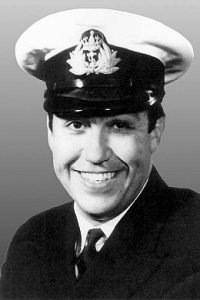
Dedicated to the memory of:

Lieutenant Commander
Gordon Walter James Batt DSC
800 Squadron Fleet Air Arm



Gordon (‘Gordy’) was born in 1945 at Bircoats in Yorkshire, the only child of Rose and James Batt. His father, now deceased, was serving in the Royal Air Force at the time. Gordy was educated at Andover Grammar School and, as a member of the local Air Training Corps, took an early interest in aviation. He joined the Royal Navy at HMS Fisgard in Cornwall as an Artificer Apprentice but was then selected in 1964 for Officer Training. At the Britannia Royal Naval College, Dartmouth, as an ‘Upper Yardman’ Cadet, he became interested in diving and sailing. Midshipman Batt then saw service in the Far and Middle East, returning to Dartmouth to continue his studies in 1967. After being commissioned as a Sub Lieutenant, he became the First Lieutenant of HMS BRAVE SWORDSMAN, a fast patrol boat. He married in 1970, and in the same year started pilot training. July 1971 saw the award of his Fleet Air Arm ‘wings’ as well the Ground School Training Prize.
After completing Advanced Flying Training and Operational Training on Sea King helicopters, Gordy joined 824 Squadron, where he served in HMS ARK ROYAL until Easter 1973. At that time, it became clear that despite the rundown of its ‘big carrier’ expertise, the Royal Navy would need to maintain a nucleus of fixed-wing pilots to crew the forthcoming Sea Harrier; Gordy Batt was among the first of a small number of helicopter pilots selected to train on fast jets.
Thus began what was to be five-year secondment to the Royal Air Force, initially for training on Jet Provost, then the Gnat and Hunter, before qualifying on the F-4M Phantom. Gordon was then operational with 43 Squadron – the Fighting Cocks – at RAF Leuchars, where he lived with his family from December 1974 to August 1977.
Gordy then returned to the Royal Navy as a student at the Naval Staff College, Greenwich until February 1978. A resumption of flying duties led to a two-year exchange appointment with the United States Navy, in the highly esteemed VX4 Squadron at the Pacific Missile Test Centre, Point Mugu, California. He is still remembered there for his great skill in saving an F14 Tomcat after a dramatic low-level engine failure. For this he was awarded the US Secretary of State’s Commendation for Meritorious Services in the Air. On return from the United States in 1980 he began his Sea Harrier conversion with 899 Squadron Naval Air Command, and moved to the Royal Naval Air Station at Yeovilton, in Somerset. He was due to become Senior Pilot of 800 Sqn in late 1982.
Events in the South Atlantic intervened, and Lt Cdr Batt deployed south in HMS HERMES, with the integrated 800/809/899 Sea Harrier component of that carrier’s Air Group. He flew several important missions as strike leader, including the bombing attacks on Stanley airfield, Goose Green, and several Argentine shipping assets. For these services and his outstanding leadership, Gordy was nominated ‘in theatre’ for the award of a Distinguished Service Cross. Then, on 23rd May 1982, about an hour before midnight, he launched from HERMES with three other Sea Harriers, to attack Stanley airfield once more. His aircraft was last off the deck but was then seen to explode ahead of the carrier. The cause of this accident, which occurred about 90 miles NE of Port Stanley, was never established. His DSC was gazetted posthumously.
Gordy Batt was a hugely respected, highly experienced, and much-admired figure in the demanding world of Naval aviation. A loving family man, he left behind Diana, and their three children – Christopher (1971), Andrew (1974) and Joanna (1976). He is still very much missed by all who knew him.
MINISTRY OF DEFENCE
HONOURS AND AWARDS
NAVY DEPARTMENT

MONDAY, 11th OCTOBER 1982
The QUEEN has been graciously pleased to approve the Posthumous award of the Distinguished Service Cross to the undermentioned in recognition of gallant and distinguished service during operations in the South Atlantic:
Lieutenant Commander Gordon Walter James BATT, Royal Navy.
Lieutenant Commander Batt, HMS HERMES, played a key role in the air battle and operations over the Falklands. On 4th May 1982, he led a daring and aggressive attack on the airstrip at the Goose Green settlement during which his number two was shot down and the pilot killed. He participated in five other low level attacks against defending targets, notable, on two occasions, against Port Stanley airfield. He also flew up to four air defence sorties per day, sometimes combining further ground attacks with these sorties. He was killed on a night mission prior to another low level attack on the airfield.
Lieutenant Commander Batt faced the danger and very high stress with characteristic cheerfulness which was a fine example to the other aircrew. He knew the odds against him but his courage never failed and his aggressive flying on 29 operational missions was in the highest traditions of the Service.
_______________________________________________________
I had the privilege of flying with Gordy on many occasions when he served with 43 (F) Squadron Royal Air Force. I was a navigator.
I recall feeling great sadness at the news of his loss. The Royal Navy was deprived of an officer who might well have risen to the greatest rank and given very beneficial service to this nation.
Gordy was an inspiration to me as a man, an officer and an aviator. For many years I asked myself – ‘What would Gordo have done?’.
The answer was always ‘Get a f***ing grip’.
Nick Reffold
_______________________________________________________

In 2022, as part of the 40th Anniversary commemorations, geographical features were identified and named after the fallen of 1982. BATT ISLET is the Southernmost Islet of the Rabbit Island rocks group in King George Bay, West Falkland.
It is in position
51° 35′ 10.85″ S, 060° 28′ 51.35″ W




